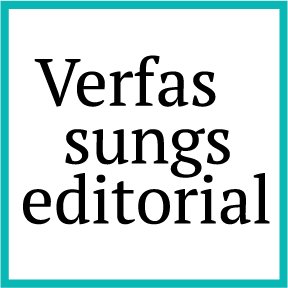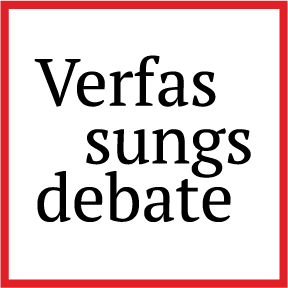Troops in L.A.
The Legal Stakes Behind the Deployment
This past weekend, President Donald Trump issued a presidential memorandum that federalized National Guard troops and deployed those troops alongside active-duty marines in response to protests against his aggressive immigration enforcement operations in Los Angeles. While framed as a response to violence, the order also addresses peaceful protest. The decision to send military forces against civilians engaged in protected First Amendment activity marks a dangerous escalation, raising serious constitutional concerns.
Attacking fundamental pillars of democratic society
The move is incredibly alarming from a democratic perspective for at least two reasons. First, the First Amendment right to free expression, including – indeed, especially – the right to express disagreement with government policies and peacefully protest is fundamental. As Justice Benjaman Cardozo explained in a famous Supreme Court decision, “neither liberty nor justice would exist” in the absence of freedom of speech, because it “is the matrix, the indispensable condition, of nearly every other form of freedom.” In other words, freedom of speech and expression is constitutive of all other rights in a democracy. Even if the Executive Order does not directly regulate protest through standard time, place, and manner restrictions, and its First Amendment vulnerability in the Courts remains to be seen, it is inevitable that turning military force inward towards the American people – regardless of justification – creates a chilling effect, deterring individuals from fully exercising those rights.
Second, because employing military force domestically is a recipe for tyranny, American tradition – essentially enshrined in the Posse Comitatus Act (PCA), which I will get to below – views military involvement in civilian affairs as a threat to personal liberty. The very presence of federal troops on American streets thus undermines two fundamental pillars of democratic society: the right to dissent and the primacy of civilian government.
A superficially modest mission
To be sure, the mission of the troops that have been deployed is a limited one. They have been used to exercise the so-called “protective power,” the president’s inherent authority to protect federal functions, properties, and officials. This means, as President Trump’s memorandum explains, that “the deployed military personnel may perform those military protective activities that the Secretary of Defense determines are reasonably necessary to ensure the protection and safety of Federal personnel and property.” What they cannot do is perform quintessential law enforcement functions – searches, seizures, arrests, detention, and similar coercive actions – because the PCA, a set of Reconstruction-era laws, criminalizes the use of the military for civilian law enforcement.
The president does have the authority to invoke an exception to the PCA, known as the Insurrection Act, in any of three circumstances: When a state requests federal aid in suppressing an insurrection; when “the President considers that unlawful obstructions, combinations, or assemblages, or rebellion against the authority of the United States make it impracticable to enforce” federal law; or when “any insurrection, domestic violence, unlawful combination, or conspiracy” deprives people of a constitutional right or obstructs the execution of U.S. law. These statutory provisions are famously broad and ill-defined, and the president’s authority to invoke them is relatively unconstrained. Nevertheless, the president has not (yet?) taken the step of invoking the Insurrection Act, leaving in place the PCA’s constraints on military activity in response to the protests.
The superficial modesty of the mission, however, papers over several remarkably disturbing aspects of the situation in LA. First, using the military to monitor largely peaceful first-amendment protected protests is an act of both provocation and intimidation. Indeed, state and local authorities were confident that they could effectively manage the situation. By all accounts, these were largely peaceful protests accompanied by sporadic acts of violence in a small area of downtown Los Angeles. As California Governor Gavin Newsom explained, it was actually the president’s determination to deploy federal troops that fanned the flames, dramatically increasing the size and volatility of the protests. So, while reliance on the protective power to send the military into an American city allowed Trump to avoid incurring the political cost of invoking the Insurrection Act – a controversial step under any circumstances – it did not serve to mitigate the harms that necessarily flow from having the military effectively policing protests. Instead, it has served as an expansion of the administration’s multi-pronged effort to threaten and intimidate dissenters of all sorts – whether they are students, or universities, or former government officials, or law firms, or the protesters in LA.
Statutory inconsistencies
Second, the National Guard deployment is arguably inconsistent – both substantively and procedurally – with the statute purportedly authorizing the federalization of the national guard, 10 U.S.C. § 12406. First, the procedural deficiency. State governors are the commanders-in-chief of their state’s National Guard contingent, and the vast majority of National Guard deployments take place at the behest of governors. When troops are deployed to assist civilian officials in the wake of a natural disaster, for example, they nearly always do so under the command of the state or territorial governor. Consistent with this role, § 12406 specifies that when a state’s National Guard troops are called into federal service, their orders should nonetheless flow through the office of the governor. In this case, however, the orders were directly contrary to Governor Newsom’s wishes, and the deployment took place over his express objections. Newsom and California are now suing the Trump administration on the grounds that this is a violation of California’s sovereignty. And while this alone may or may not render this use of the statute unlawful, it represents further antagonization of a community that already viewed recent federal immigration enforcement actions as excessive and cruel. (On late Thursday, a federal judge ruled that the federalization of the National Guard was unlawful and required President Donald Trump to return control of members of California’s National Guard to the state. An appeals court put that ruling on pause while the legal dispute plays out.)
Substantively, § 12406 authorizes the federalization of National Guard troops in cases of actual or threatened invasion, actual or threatened rebellion “against the authority of the Government of the United States,” or when “the President is unable with the regular forces to execute the laws of the United States.” President Trump’s memo invoking § 12406 states that if “protests or acts of violence directly inhibit the execution of the laws, they constitute a form of rebellion against the authority of the Government of the United States.” The scatted acts of violence that have occurred are certainly unlawful, unacceptable, and counterproductive. But the idea that they constitute a “rebellion” or that they overwhelmed the capacity of civilian law enforcement to address blinks reality. The last time military troops were sent into a state over the objections of the local authorities was 1965, when President Johnson deployed the National Guard in the face of Alabama’s segregationist governor George Wallace’s refusal to enforce a court order authorizing civil rights activists to march from Selma to Montgomery. That local defiance of federal law is the sort of scenario that calls for federal intervention, and bears little resemblance to the events in LA.
Beyond L.A.
Which brings us the third problematic element of this incident. President Trump’s memorandum does not apply only to Los Angeles, or only California, or even only to places where protests have led to violence. Rather, it authorizes use of military troops “at locations where protests against [Federal] functions are occurring or are likely to occur.” This takes a statute designed to apply in three very narrow sets of extreme circumstances and purports to apply it as an open-ended pre-authorization to deploy the military anywhere protests – which are constitutionally protected activity – may occur. Thus, Gavin Newsom is the first, but may not be the last, governor subjected to an unwanted federal military presence. This fact was not lost on other governors. In fact, twenty-two Democratic governors issued a joint statement in response to the military deployment in LA asserting that “local authorities should be able to do their jobs without the chaos of this federal interference and intimidation.” Additional deployments seem all the more likely both because of the nationwide plans for “No Kings” protests planned for this weekend as well as President Trump’s promise that any protests – violent or not – of his upcoming military parade in Washington D.C. would be met with “very heavy force.”
Artificial emergencies
Fourth, the president’s memo continues a now-familiar and highly problematic pattern from the Trump administration: Declare an emergency where none exists, and then claim the mantle of emergency power to take extraordinary, unnecessary, and unlawful executive actions. There is no invasion justifying the use of the Alien Enemies Act to summarily remove alleged members of a Venezuelan gang from the United States; there is no “extraordinary threat . . . to the national security, foreign policy, or economy of the United States”, posed by a trade imbalance justifying use of the International Emergency Economic Powers Act to impose tariffs. And here, as noted above, there is no rebellion triggering the statutory authority behind the federalization of California’s National Guard. The reasons these statutes authorize “emergency” powers is because we want the government to be able to respond to actual threats to the Republic. But resort to emergency authorities should be a last, not a first resort, especially when the result is American military forces being deployed to American streets to confront Americans exercising their first amendment rights.
Questions of timing
Finally, and perhaps most disturbing, is that Trump was so quick on the trigger here, when he could not be convinced to call up the National Guard on January 6 to protect the Capitol against a violent attack leading to multiple deaths. The truth is that ever since Trump was dissuaded from sending in the U.S. Military to quell protest in the wake of George Floyd’s murder by Minnesota law enforcement officials, he has been looking for a chance to “remedy” that “mistake.” Long before he was re-elected in 2024, Trump and his allies were formulating plans to deploy the military in response to protests from civil society. The LA protests simply provided an excuse for Trump to live out his wish to retaliate with overwhelming force any time the American people have the gall to disagree with him.
The timing of the crackdown is also no accident. After a week of one negative news cycle after another – a high-profile break-up with Elon Musk, diminishing support for an economic plan premised on taxing the poor and giving to the rich, backing down from promises to defy judicial orders to return Kilmar Abrego Garcia to the United States – Trump found a way, as he so often does, to change the subject, away from narratives about his weakness and failures to a topic on which he feels he is on firmer ground. The risk now is that this ploy to distract the American public’s attention away from his unpopular economic agenda will lead to further escalation and violence, thereby giving Trump the excuse he needs to go yet further, possibly with tragic results – especially against the backdrop of upcoming midterm elections in 2026.



